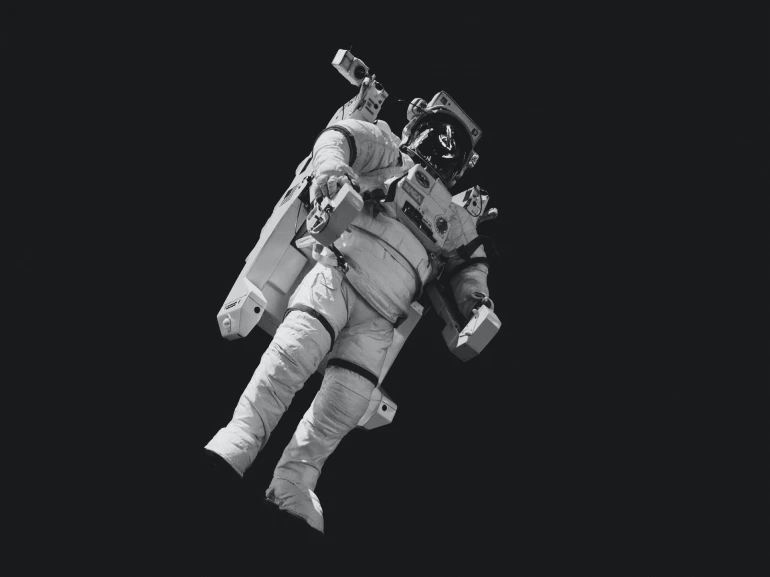Artificial intelligence has already changed the way we live our lives on earth. It’s used in business, science, healthcare, agriculture, natural language processing, and more. Taking it a step further is machine learning, where given ample amounts of data and examples, machines can figure out better ways to solve problems on their own.
The question is, what is AI doing beyond the scope of our planet? How is space exploration utilizing this technology?
Take a look at how space stations around the world are using AI and discover what they have contributed as they help scientists, engineers, and astronauts uncover the secrets of the universe.
1. AI-Model Assistants
Confined and isolated by themselves in space, life as an astronaut can get lonely. But with the advancements in Artificial Intelligence, astronauts now have companions who can help make their jobs so much easier.
Now meet CIMON, the world’s first AI astronaut assistant designed and developed in part by IBM to test human-machine interaction in space. Cimon, or Crew Interactive MObile CompanionN first made it to space in November 2018 via the International Space Station (ISS).
It can do basic things like respond to commands, record video and images, and maneuver itself within the ISS’s Columbus research mobile. CIMON proved that it could understand the content within a given context but the human’s intent too.
After spending 14 months in space, it was then followed by CIMON-2. Launched from the Kennedy Space Center in Florida on December 5, 2019, CIMON-2 is a vast improvement as it’s not equipped with “emotional intelligence.”
CIMON-2 has the capability to evaluate emotions. The goals is to have it empathetically and appropriately respond to events and situations based on its analysis.
The possibilities with AI-based assistants are endless. For starters, CIMON project manager, Christian Karrasch stated that engineers and scientists are looking to upload AI into a “cloud” so that the crew would be able to rely on AI-based assistance without relying on permanent data link to Earth.
2. AI Used in Manufacturing Satellites and Spacecrafts
Satellites and Spacecrafts are sensitive, complicated, and very expensive pieces of technology to build and assemble. There are complex tasks that have to be done with accuracy and precision so operations must be done in special rooms that are made specifically to handle sensitive equipment.
AI systems are being used to aid in the manufacturing process as they are more accurate thus, fewer errors are committed in production. This saves time and resources, as well as allow humans to focus on work that machines couldn’t do.
With machine learning, the process is sped up as ML is capable of finding new ways to solve problems and approach it more efficiently. Simply put, AI is able to make sure that the work done is accurate, executed properly, fast, efficient, and less prone to errors.
3. AI Navigation System

If humans get lost on Earth, what more in outer space. The problem is, unlike Earth, there’s no GPS, Google Maps or Waze to help astronauts navigate their way through space and back to their spacecraft ー at least, not yet.
NASA is now working on a project that will enable navigation on the moon. This involves GPS tracking on the surface of the moon without using expensive satellites.
If successful, they could freely roam and navigate the moon and other planets using autonomous driving systems enabled with AI powered navigation systems.
As of now, Curiosity, a Mars rover deployed in 2011, is continuing its investigation of Mars to this day with the goals of finding signs of water and other elements that would make it possible for human survival on the planet in the future. With AI navigation, it could create a virtual map of Mars, making it easier to explore the planet.
4. Tackling Space Debris
Earth, as well as satellites deployed in outer space are in constant danger. There are nearly 34,000 objects or space debris that are bigger than 10cm and pose threats to earth and existing infrastructure.
There are many innovative ideas such as developing satellites to disintegrate these debris as they enter the Earth’s atmosphere.
The key here is machine learning and automation. With machine learning, it’s possible to stop any possible collision in space to begin with, thus, preventing space debris.
5. AI and Machine Learning Planet Search

There’s about 100 billion stars in the galaxy, and NASA estimates that around 40 billion has the potential to support life. Only time will tell.
However, before space stations can find those forms of life, they first need to locate planets. Finding a planet is the first step, once a planet is located, then space stations will analyze their atmospheric conditions to determine if it can support life.
Artificial Intelligence has been a big help in this department. In 2017, Google’s machine learning technology helped NASA locate a new planet circling Kepler-90. The newly discovered planet, Kepler-90i, is a sizzling hot mass that orbits its star every 14.4 days.
Google’s machine learning technology was able to identify the planet after researchers Andrew Vanderburg and Christopher Shallue trained the machine to learn how to identify exoplanets using light readings recorded by NASA’s Kepler Space Telescope.
Machine learning has the ability to process information and learn by itself. What separates it from AI is that ML doesn’t rely on human data alone to formulate its own set of data and code.
What happened in the process is that using the data from the researchers, the ML system’s “neural network” reviewed data from the Kepler telescope and found weak signals which it then improved, leading to the discovery of a new planet that had been previously missed.
AI as a Game Changer
Artificial Intelligence is just what we need today. As the technology for data collection advances, the way we read and process different kinds of data also needs to develop exponentially. Artificial Intelligence has proven itself to be a game changer, not just on earth, but advancements in space exploration as well.
With AI and humans working side-by-side, it will be easier to move on from difficult tasks to tackle the next stages of discovery.
However, developing humanoid machines that are free from human input is still decades away. For now, AI and ML are here to alleviate repetitive or complicated tasks and help humans complete missions that are too dangerous to execute.


